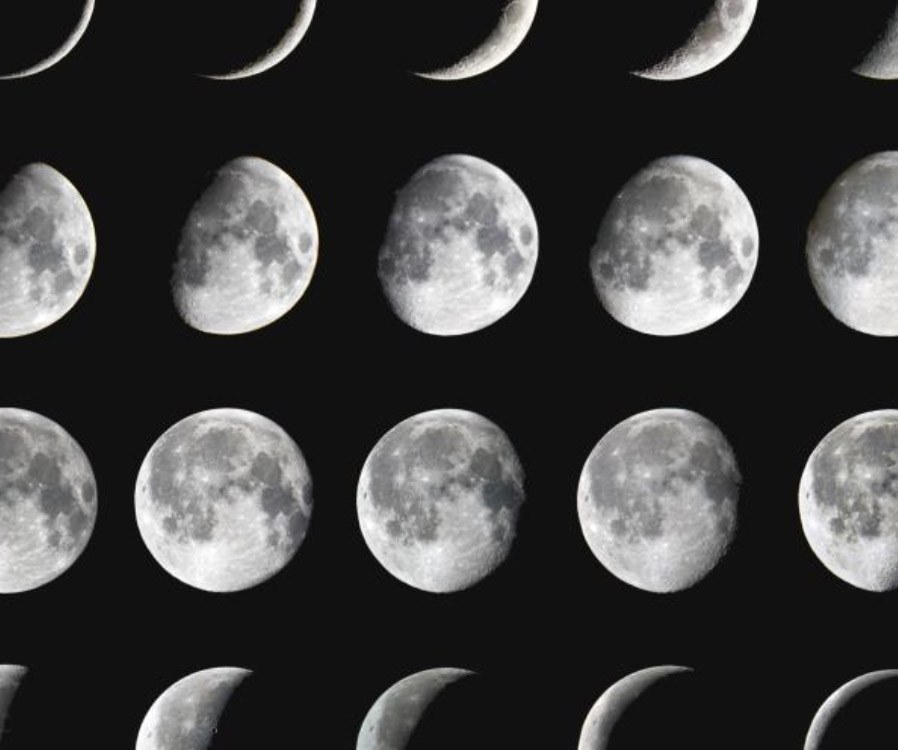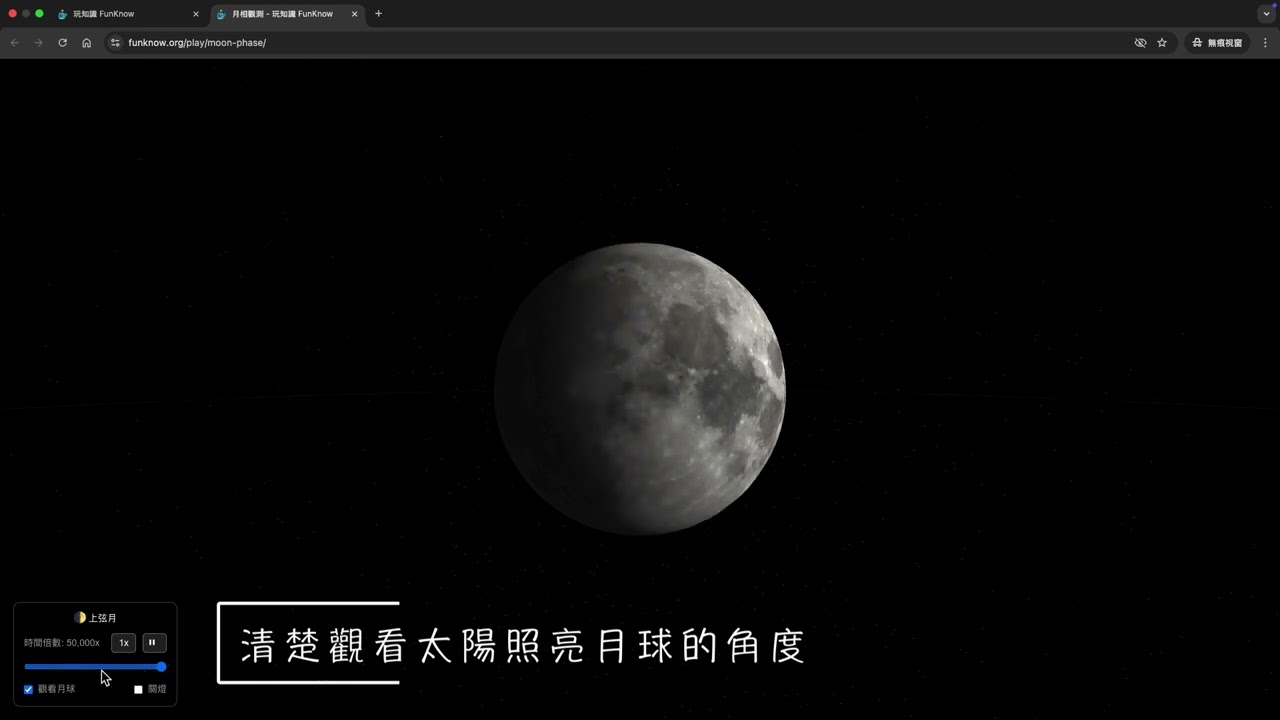Embark on a breathtaking astronomical journey! This interactive 3D moon phase simulator takes you deep into exploring the mysterious lunar cycle, allowing you to witness the complete transformation from new moon to full moon. Through stunning visual effects and an intuitive interface, you can freely control time flow, observe every detail of lunar phase changes, and even switch to lunar perspective for a close-up view of this celestial body’s magnificent scenery.
Whether you’re an astronomy enthusiast, educator, or simply an explorer curious about the mysteries of the universe, this simulator provides an unprecedented learning experience. The scientifically accurate representation of the Earth-Moon-Sun system allows you to feel the grandeur and beauty of the cosmos from home.
User Guide
Basic Controls
- Mouse Drag: Hold left-click and drag to rotate the viewing angle and observe the Earth-Moon system from different perspectives
- Scroll to Zoom: Use mouse wheel to zoom in or out of the view
- Mobile Controls: Single finger drag to rotate view, pinch with two fingers to zoom in/out
Control Panel Features
- Real-time Moon Phase Display: Current lunar phase name and symbol are displayed on screen in real-time
- Time Multiplier Adjustment: Drag the slider to adjust time flow speed, from extremely slow to extremely fast
- Pause/Play: Click the pause button to stop or resume time flow at any moment
- Reset to 1x: One-click return to normal time flow speed
- Moon View: When checked, the camera will follow lunar movement, providing close-up moon perspective
- Lights Off: Turn off Earth’s nighttime lighting effects for a different visual experience
Introduction to Lunar Phases
Lunar phases are the different shapes the Moon appears to take as it orbits Earth, caused by varying angles of sunlight illumination. This cyclical change repeats approximately every 29.5 days, known as a “synodic month.”
Eight Major Lunar Phases
New Moon 🌑 The Moon is positioned between Earth and the Sun. The illuminated side faces away from Earth, making the Moon nearly invisible in the night sky.
Waxing Crescent 🌒 A few days after the new moon, a thin crescent appears, typically visible in the western sky during evening.
First Quarter 🌓 The Moon, Earth, and Sun form a right angle. The right half of the Moon is visible, usually rising in the evening and setting at midnight.
Waxing Gibbous 🌔 The Moon continues to grow larger but hasn’t reached full phase yet. Most of the illuminated surface is visible.
Full Moon 🌕 Earth is positioned between the Moon and Sun. The entire illuminated face of the Moon is visible, typically rising at sunset and setting at sunrise.
Waning Gibbous 🌖 After the full moon, the Moon begins to wane, but most of the illuminated surface remains visible.
Last Quarter 🌗 The Moon again forms a right angle with Earth and Sun. The left half of the Moon is visible, typically rising at midnight.
Waning Crescent 🌘 The final stage of the lunar cycle, showing only a thin crescent, visible in the eastern sky before dawn.
Scientific Principles Behind Lunar Phases
Lunar phase changes are purely the result of lighting effects caused by changing relative positions of the Moon, Earth, and Sun. The Moon doesn’t produce its own light; what we see as “moonlight” is actually reflected sunlight. As the Moon orbits Earth, the angle at which sunlight illuminates the Moon constantly changes, creating different phases when viewed from Earth.
Cultural Impact of Lunar Phases
Throughout history, lunar phases have profoundly influenced human civilization:
- Agricultural Applications: Farmers have used lunar phases to schedule planting and harvesting times
- Religious Culture: Many religious festivals are tied to lunar phase cycles
- Literature and Arts: Lunar phase changes have inspired countless poems, songs, and artistic works
- Modern Science: Lunar phase observations help humans understand celestial mechanics
Disclaimer
This moon phase simulator is primarily intended as an educational and science communication tool, designed to help users understand the basic principles of lunar phase changes. While we strive for scientific accuracy, this simulator is not a professional astronomical observation tool.

